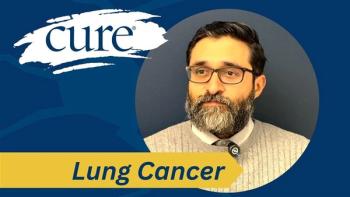
Genomic Features in Young Adults With Cancer May Differ Than in Older Patients, Which May Help Steer Treatment Decisions
As cancer incidence increases in young adults, understanding the genomic profiles of tumors in young adults may guide treatment options such as immunotherapy.
Young patients with cancer may have tumors with genomic differences compared with older patients that may help identify treatment options for young adult patients, according to recent study results.
Findings from the study, which were published in Cell Reports, may add more knowledge to this area, especially since genomics are not often studied in young adult cancers despite an increase in its incidence in recent years.
Kuan-Lin Huang, senior author on the study and an assistant professor in the Department of Genetics and Genomic Sciences at the Icahn School of Medicine at Mount Sinai in New York, explained the importance of understanding genomics in young adults in an interview with CURE®.
“Genomics really is a characterization of all the genes that go wrong in a patient’s tumor. … And so identifying the genes, some of which already have corresponding drugs, can allow us to find, for example, if gene A goes wrong in 15% of young patients with breast cancer, then we know for 15 of those young patients, we may have already existing a targeted therapy that can be applied to them,” he said.
Huang and researchers evaluated genomic profiles of 1,757 young adults and 3,608 patients with later-onset cancer. Patients from both age groups had 14 different cancer types. These genomic profiles were used to identify differences between younger and older patients such as mutations, number of copies of a particular gene and immune features.
He specifically highlighted the BRAF mutation which was observed frequently in young patients with skin cancer compared with older patients. However, the opposite was observed in colorectal cancer, as younger patients were less likely to have a BRAF mutation than older patients.
“That (means) the anti-BRAF treatment currently being developed may apply differently to patients of different ages between these two cancer types,” he said.
He explained that these differences may pinpoint a specific reason these diseases arise and may have treatment implications, which is important because currently there are treatments that target specific mutations.
“So this might mean that, that specific treatment might only be applicable to a certain or different fraction of young adults versus later-onset patients,” he said.
He also discussed immunotherapy, which can leverage a patient’s immune response to contract a tumor, but it requires a certain immune response that already exists in a patient’s tumor.
“And we do see some general trend of the immune response being different in younger versus older patients. And so this (has) a (possible) ramification in how current immunotherapy might apply differently to later-onset and younger patients,” he added.
Huang said that the causes of young adult cancers are “really under-characterized.” Researchers took the large dataset used in this study to try to understand these correlations better, and a lot of these findings were not previously identified.
“This is one of the earlier studies of the molecular reasons that give rise to these young adult cancers. But given that this has increasingly become a public health concern, more and more studies definitely need to be conducted to follow up on a lot of our findings to address other parts of this, like lifestyle factors. And obviously, I think for these patients being younger, there may also be survivorship issues. I think a lot of these really need to be further researched for the benefit of patients,” Huang concluded.
For more news on cancer updates, research and education, don’t forget to





